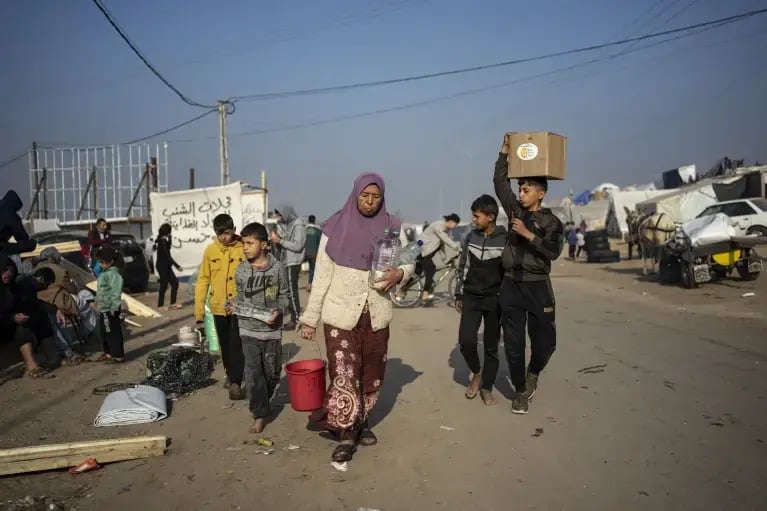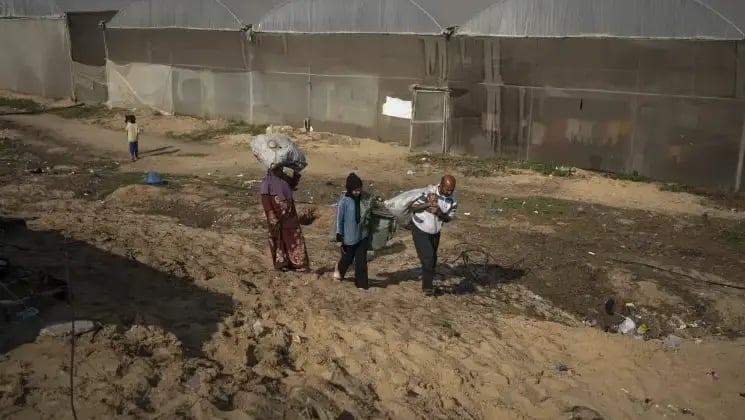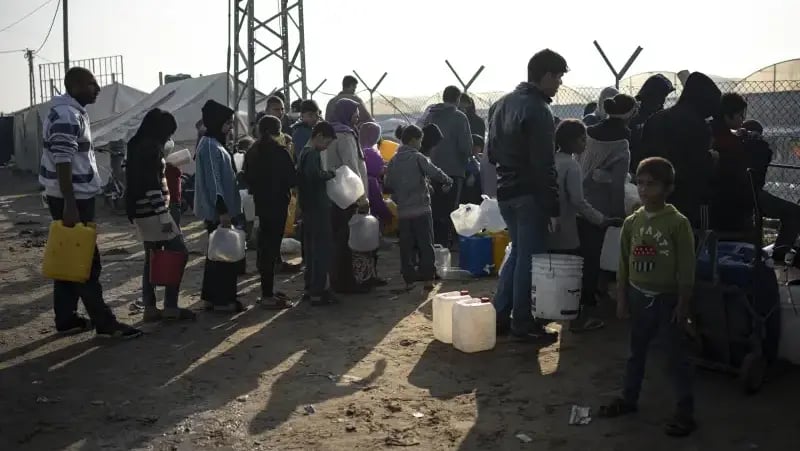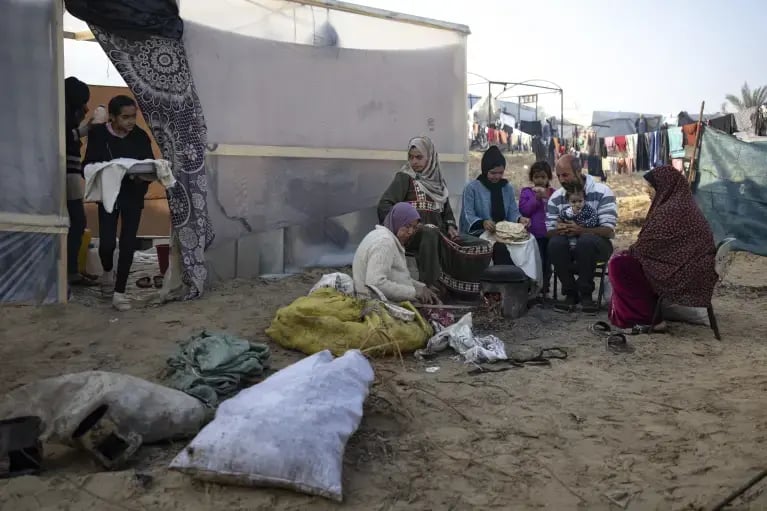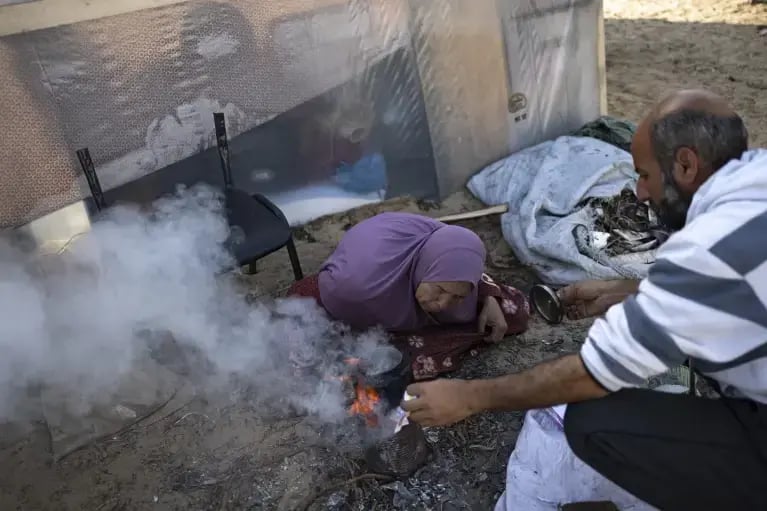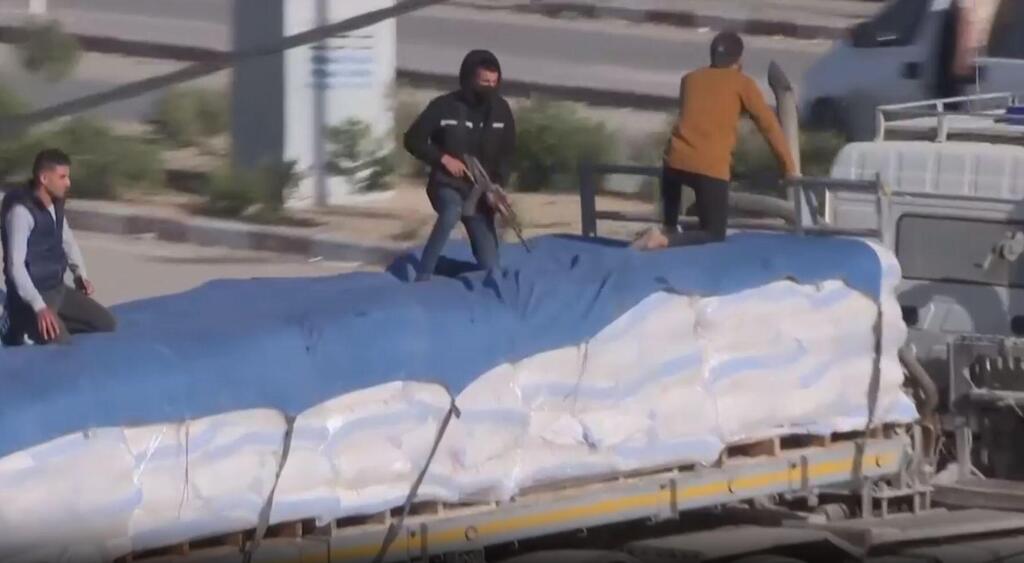The Associated Press (AP) news agency published an article on Friday describing the lives of Gazan civilians who arrived at the town of Muwasi in the southern part of the Gaza Strip, which is defined as a humanitarian zone.
More stories:
“Members of the Abu Jarad family are clinging to a strict survival routine. They fled their comfortable three-bedroom home in northern Gaza after the Israel-Hamas war broke out nearly three months ago. The 10-person family now squeezes into a 16-square meter (172-square foot) tent on a garbage-strewn sandy plot, part of a sprawling encampment of displaced Palestinians,” the outlet wrote.
“Every family member is assigned daily tasks, from collecting twigs to build a fire for cooking, to scouring the city’s markets for vegetables. But their best efforts can’t mask their desperation.
"Palestinians seeking refuge in southern Gaza say every day has become a struggle to find food, water, medicine and working bathrooms. All the while, they live in fear of Israeli airstrikes and the growing threat of illnesses,” it added.
According to AP, Israel’s ground offensives in the northern part of the Strip “have pushed almost all Palestinians toward the southern city of Rafah along the Egyptian border. The area had a prewar population of around 280,000, a figure that has bulged to over 1 million in recent days, according to the U.N. agency for Palestinian refugees.
Gaza amid war
"Rafah’s apartment blocks are crammed with people, often extended families who have opened their doors to displaced relatives. West of the city, thousands of nylon tents have sprung up,” it added.
The news agency noted that “Most of northern Gaza is now under the control of the Israeli army, which early in the war urged Palestinians to evacuate to the south. As the war progressed, more evacuation orders were issued for areas in the south, forcing Palestinian civilians to crowd into ever smaller spaces, including Rafah and a nearby sliver of land called Muwasi.”
Nouman Abu Jarad, a Gazan who evacuated to the southern part of the Strip alongside his family, told AP that “the conflict drove the family the entire length of Gaza. They fled their home in the northern border town of Beit Hanoun on the first day of the war and stayed with a relative in the nearby town of Beit Lahia.”
“Six days later, the intensity of Israeli strikes in the border area sent them south to Al-Quds Hospital in Gaza City. As people started to evacuate the hospital two days later, they traveled to the Nuseirat urban refugee camp in central Gaza, making the 10-kilometer (6-mile) journey on foot,” AP added.
“They stayed in a cramped U.N. school building in Nuseirat for over two months, but left on Dec. 23 as the Israeli army turned its focus toward Hamas targets in central Gaza refugee camps. They escaped to Muwasi on Dec. 23, believing it was the safest option. On the first night, they slept out in the open. Then they bought nylon and wood in a Rafah market to build a tent,” the article described.
“Nouman, an accountant, sleeps on the nylon-covered floor with his wife, sister, six daughters and one grandchild. They sleep on their sides to conserve space. He said the tent cost 1,000 shekels, about $276. ‘It is completely crazy,’ he said. In Rafah’s demand-driven war economy, larger pre-built family tents now range from $800 to $1,400.”
According to the AP article, the family’s day begins at 5 a.m. “Nouman said his first job is to start a small fire to cook breakfast, while his wife and daughters knead dough for flatbread and then wash their utensils and metal cooking griddle. After eating, their attention turns to fetching water and food, tasks that take up most of the daylight hours.”
“Nouman said he and several of his younger relatives collect jugs of water from one of the public pipes nearby, water that is exclusively used for washing and not suitable for drinking. Next, they head to one of the dozens of drinking water tankers dotted across the city, where they wait in line for hours. A gallon of drinking water costs one shekel, or 28 cents. Some, so desperate for cash, wait in line just to sell their space.”
“After the water is fetched, family members move between several open markets to hunt for vegetables, flour and canned food for that evening’s meal. Meanwhile, Nouman busies himself with scouring the ground for twigs and bits of wood to make a fire,” the article added.
“Food prices have soared. Gaza is facing acute food and medicine shortages and is dependent largely on aid and supplies that trickle in through two crossings, one Egyptian and one Israeli, and what has been grown in the recent harvest. More than half a million people in Gaza — roughly a quarter of the population — are starving, the United Nations said in late December.
Dalia Abu Samhadana, a young mother sheltering with her uncle’s family in a crowded house of 20 in Rafah, says the only food staples at her local market are tomatoes, onions, eggplants, oranges and flour. All are virtually unaffordable. A 25-kilogram (55-pound) bag of flour before Oct. 7 cost around $10. Since then it has fluctuated between $40 and $100. ‘My money has almost run out,’ said Abu Samhadana.”
UN struggling to meet demand
AP noted that displaced Palestinians in the Strip are entitled to free aid if they register with the UN agency for Palestinian refugees, which hands out food and medical supplies throughout southern Gaza.
“Abu Samhadana, who is originally from the nearby southern town of Khan Younis, said she has tried to register for free aid several times but has been turned away due to the lack of available supplies. The U.N. agency is simply overwhelmed and is already providing support to 1.8 million people in Gaza, according to Juliette Touma, its communications director. She said she did not know if the agency had stopped registering new aid seekers,” the article noted.
“With few options left, some hungry Palestinians in Rafah have resorted to grabbing packages from aid trucks as they pass by. The U.N. refugee agency confirmed that some supplies of aid had been snatched from moving trucks but did not provide any details.”
AP’s article also described how “Hamas police escorting aid trucks from border crossings to UN warehouses have been seen beating people, mostly teenagers, as they try to grab what they can. In some cases, they have fired shots into the air. In one incident, a 13-year-old boy was killed when Hamas police opened fire. Meanwhile, health officials warn of the growing spread of diseases, especially among children.”
Meanwhile, UN Under-Secretary-General for Humanitarian Affairs, Martin Griffiths, said Saturday that Gaza has become "uninhabitable" due to Israeli attacks since the outbreak of the war on October 7. "Three months since the horrific 7 October attacks, Gaza has become a place of death and despair,," Griffiths added.



